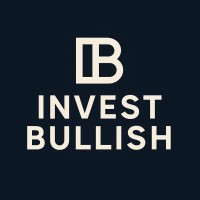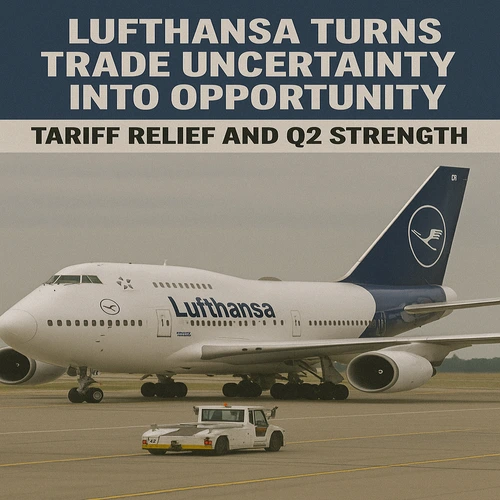Navigating Transatlantic Trade Noise
Despite escalating U.S. trade tariffs across many sectors, the July 27 U.S.–EU trade framework includes a zero-tariff exemption for aircraft and parts, shielding the aviation sector. Lufthansa Group, deeply dependent on transatlantic operations, outperformed expectations in Q2 2025—bolstered by premium travel demand and disciplined cost control—while maintaining its full-year outlook. (turn0news19, turn0search16)
2. Lufthansa Snapshot: Financial & Trading Overview
- Ticker: XETRA: LHAG.DE
- Price (Aug 1 Close): €12.75 (up ~0.8% on Q2 results)
- Market Cap: ~€15.2 billion
- H1 2025 Revenue: ~€8.1B (YoY +6%)
- Q2 2025 Adjusted Operating Profit: €871M (+27% YoY)
- H1 2025 Net Income: €127M vs. €265M loss a year ago
- Free Cash Flow: Liquidity ~€11.4B; net debt reduced to €5.3B
- Liquidity Position: Strong cash buffer supports operations
- Dividend Yield: N/A until full-year clarity
3. Market & Sector Response
| Stock / Index | Reaction |
|---|---|
| Lufthansa (LHAG.DE) | +0.8% over 2 trading days |
| Air France-KLM (AIR.PA) | +6.5% on Q2 beat (turn0news19) |
| Stoxx 600 Airlines | Flat to modest gains despite tariff concerns |
U.S. airline stocks—such as Delta and United—underperformed amid macro uncertainty and a weaker domestic booking cycle. European peers gained relative strength due to tariff clarity and sustained premium demand. (turn0news21)
4. Trade & Regulatory Context
The zero-for-zero exemption for aviation in the EU–U.S. trade deal ensures that aircraft and components remain tariff-free, sparing Lufthansa from capital disruption and fleet renewal costs. (turn0news18, turn0search16)
Despite political criticism—especially from French officials calling the deal unbalanced—aviation stakeholders welcomed the outcome as stabilizing and essential for transatlantic operations. (turn0news20, turn0news23)
5. Strategic Strengths & Risk Exposures
Positives
- Resilient transatlantic demand, especially from affluent American travelers.
- Q2 performance benefited significantly from premium offerings and cost savings, including lower fuel hedging costs. (turn0news19)
- Strategic partnership with ITA Airways and expanded capacity at Italian hubs provides operational flexibility.
Risks
- Continued policy uncertainty surrounding potential reintroduction of tariffs post-2026.
- Prolonged pressure on yields in short-haul European markets and slower Asia-Pacific recovery.
- Labor cost increases and airport disruptions (e.g., Schiphol congestion at KLM) remain embedded challenges.
6. Technical Analysis & Key Levels
- Support Range: €12.40–12.50
- Resistance: €13.50
- RSI: ~54 (Neutral)
- Trend: Holding above 20-day average (€12.60), near longer-term support region.
7. Comparative Peer Metrics
| Airline | Ticker | Operating Profit Δ | Premium Exposure | Fleet Modernization | Liquidity |
|---|---|---|---|---|---|
| Lufthansa Group | LHAG.DE | +27% YoY | Strong | High | Strong (€11.4B cash) |
| Air France-KLM | AIR.PA | +44% YoY | Premium-led | Moderate | Moderate |
| IAG (British Airways) | ICAG.L | Flat–slightly up | Mixed | High | Moderate |
8. Forward Scenarios: Value & Risk Paths
| Scenario | Lufthansa Price | Trigger Conditions |
|---|---|---|
| Bull (~35%) | €14.50–15.00 | Continued transatlantic demand; tariff framework reaffirmed |
| Base (~50%) | €12.50–13.50 | Stable fundamentals; persistent short-haul softness |
| Bear (~15%) | €11.00–12.00 | Policy reversal; cost inflation; softer U.S. booking momentum |
9. Investment Considerations
- Short-Term: Holding a tight range between €12.50–13.50; cautious optimism until year-end data.
- Mid-Term: Track airline yield evolution, fuel hedging efficiency, and delivery schedules.
- Long-Term: Fleet flexibility, liquidity strength, and premium service positioning make LHAG structurally rewarding, pending policy clarity.
Bottom Line
Lufthansa has turned fragile trade headline risk into a competitive advantage—thanks to the aerospace tariff carve-out and continued premium demand on transatlantic routes. While policy uncertainty and macro swings remain, the Q2 beat and maintained outlook suggest a limited downside and material upside potential if U.S.–EU trade friction remains muted.

